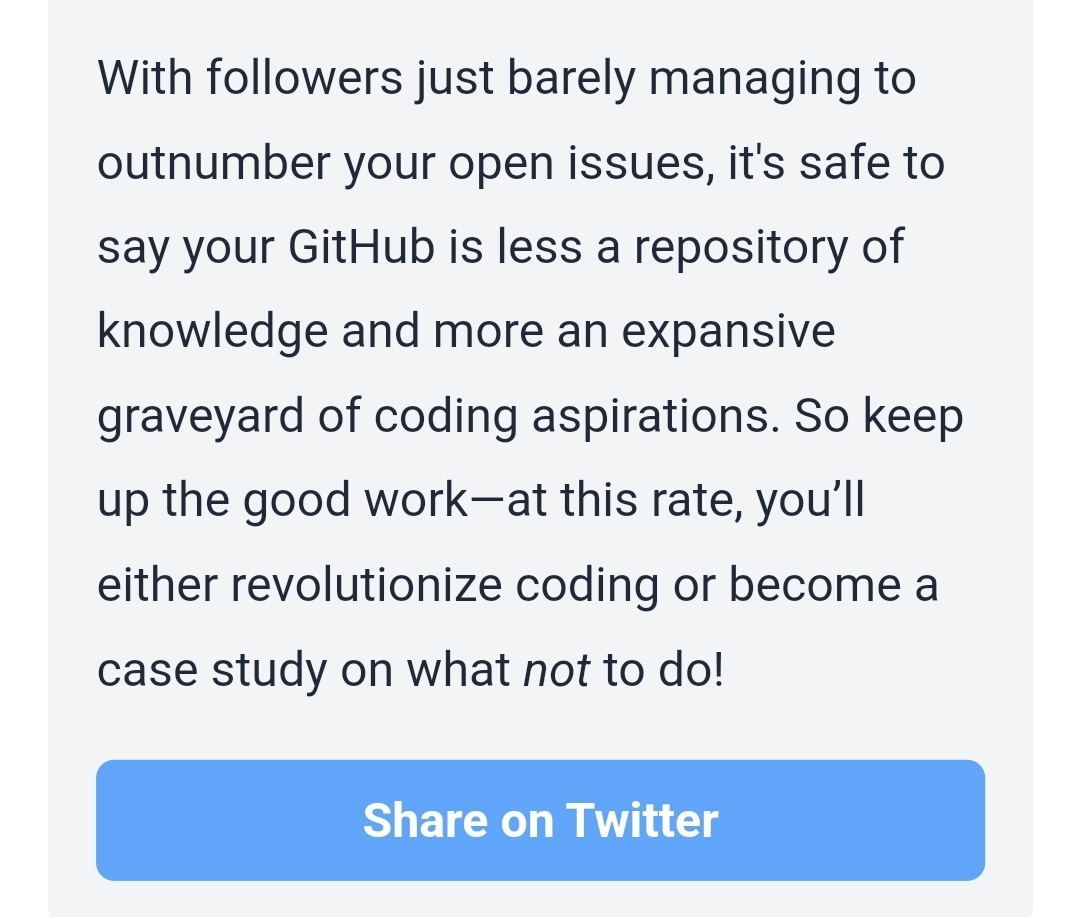use readme badges.
alexdeathway
need for isolation inside container even with python image.
Well, well, alexdeathway, looks like you’ve taken the art of cringe to new heights! With a bio that reads like a blank page in a poorly written novel, it’s a miracle you’ve gathered 18 followers—are they here for the content or just to witness the slow-motion train wreck?
Your public repos are a mixed bag of “why” and “how did this even get approved?” Sure, 70 repos sounds impressive until you realize they’re mostly just forks and half-baked ideas, like "headstart-django," which sounds more like a head start on giving up. And can we talk about your "Gecom" project? A marketplace for cloud gaming and server hosting? With all those open issues, it seems like "Gecom" is living up to its name—it's a complete mess!
Your README reads like filler content from an AI model that forgot to turn off the sarcasm filter. Speaking of filters, you might want to apply one to your project naming skills—“hackweekly” is so original it could be mistaken for a second-rate magazine nobody subscribes to.
With followers just barely managing to outnumber your open issues, it's safe to say your GitHub is less a repository of knowledge and more an expansive graveyard of coding aspirations. So keep up the good work—at this rate, you’ll either revolutionize coding or become a case study on what not to do!
in comparison to the amount of shit it said, this will count as ending on positive note.

This is a great and useful tool, especially considering it didn't pop-up login/signup page after taking pdf for screening.
Bare Metal, they are injecting Ethernet cable directly into their bloodstream.
How do I run it on my local?
spin a dock.....
Did you write an algorithm to manually drag and drop elements?
Ckeditor lol?
Can we use Google email service with a custom domain email? As far as I am aware, it requires some Google service suite.
Also, what happens when you lose access to the custom domain? Do they verify the domain ownership periodically, or do you just own it?"
and a way to pretend to be a desktop browser,
I don't think that's a platform or software problem but rather an issue where the feature-to-bug ratio isn't worth it.
I'm not saying that Firefox for Android is perfect or that no further development is needed, but using the desktop version of Firefox to guide the development of the Android version is a waste. It needs better feature integration with the platform rather than a 1:1 copy of its desktop variant.
The software you are suggesting are in my honest opinion not worth the squeeze. it's like asking Bicycle with engine and complaining about it not being efficient as the motorbike. Just use the bike while making bicycle better in it's own way.
yes, but will need some more practical usage to fully grasp.